Table of Contents Show
In 2001, Baz Luhrmann declared his Red Curtain Trilogy completed. The trilogy consists of 1992’s Strictly Ballroom, 1996’s Romeo + Juliet, and 2001’s Moulin Rouge!. Nearly thirty years after Strictly Ballroom’s release, Luhrmann’s films continue to be celebrated and rebroadcast on television. The Red Curtain Trilogy’s distinct style, similar narrative structure, and acclaimed soundtracks have yielded seemingly eternal appreciation for the quirky director. With Luhrmann due to release a new film next year, let’s take a look back on the Red Curtain Trilogy, and examine why it’s still so powerfully entertaining.
So Exciting, the Audience Will Stop Their Cheers
Baz Luhrmann’s films have the appearance of simplicity. The plots are usually pretty easy to follow. Most consist of a boy falling in love with a girl and the romance ending tragically, usually with someone dying. Luhrmann’s pull lies in his extravaganza of visuals. Luhrmann does not rely on special effects, but aesthetically dazzling and disorienting camerawork coupled with extreme close-ups of nineteenth-century handle-bar mustaches and screaming faces caked in stage makeup. Luhrmann’s wife, costume and production designer Catherine Martin, deserves equal stylistic credit, having collaborated with her husband on all his films.
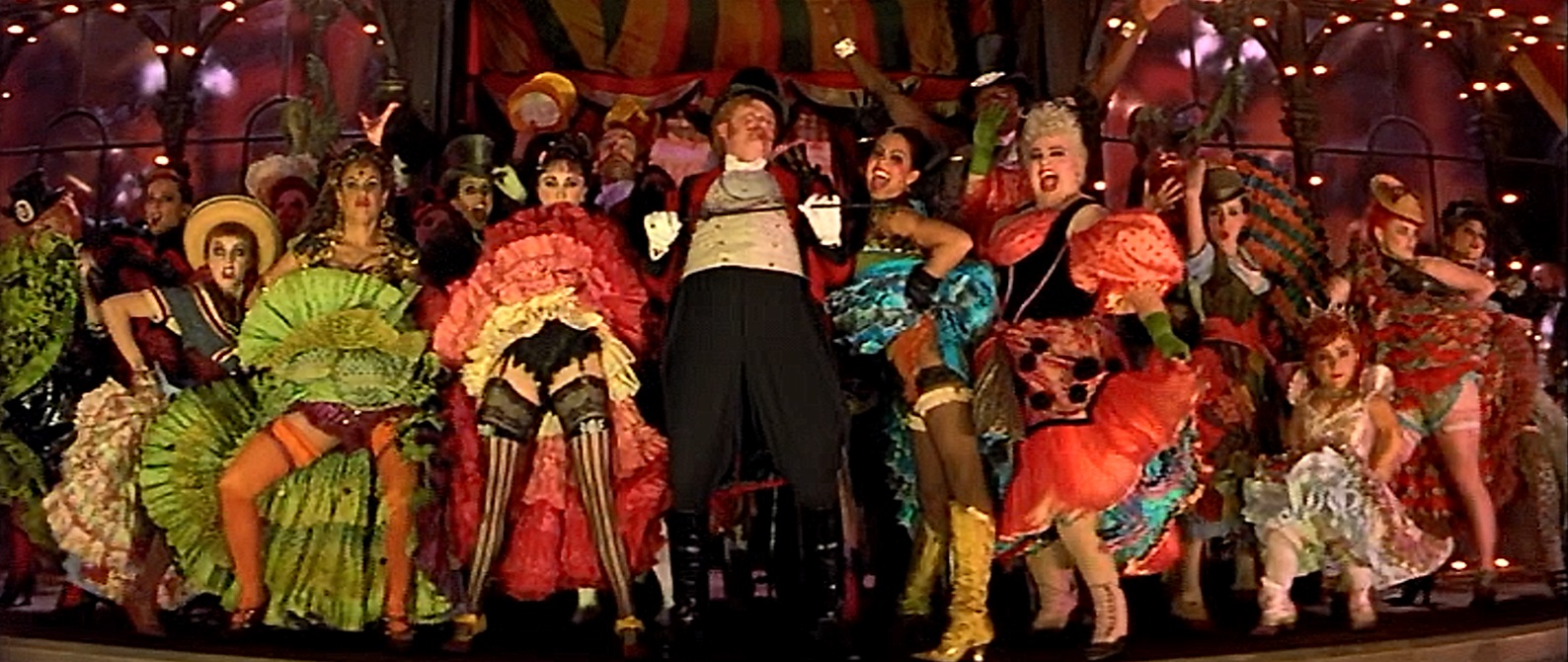
Moulin Rouge! (( Mental Floss )) is the runaway favorite when it comes to such weird bedazzlement. For starters, the scene in which Christian attempts to persuade Satine to become “lovers” takes place entirely inside a hollowed-out, gigantically-constructed elephant. However, this odd setting is almost minute compared to some of the more striking wonderments of the film. For instance, the moon not only has a face but sings; the gun the jealous Duke attempts to kill Christian with is thrown by Zidler, bouncing off the Eiffel Tower at an enormous size; and a green fairy appears singing “The Sound of Music” after the Bohemians drink Absinthe. Despite the visual oddities, the effects remain extremely eye-catching.
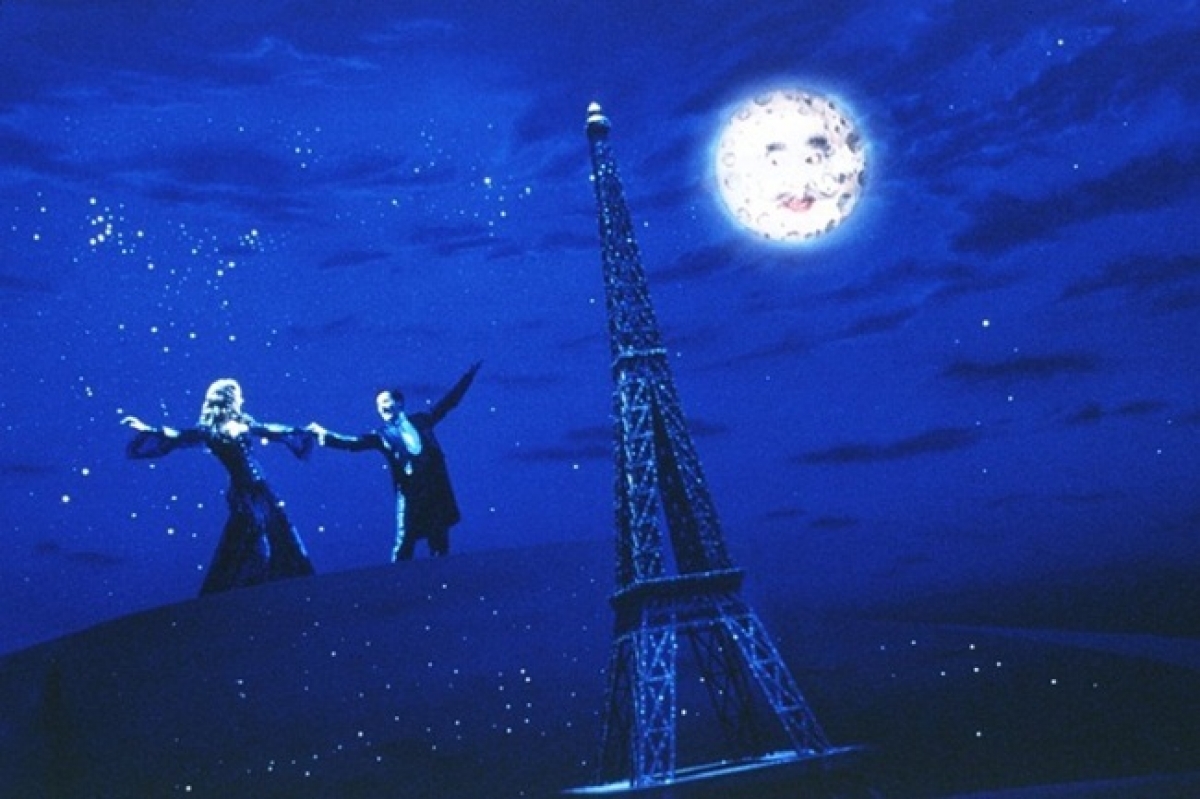
The outlandish and sharply contrasted visuals of Moulin Rouge! were also quite prevalent in Baz Luhrmann’s earlier endeavor, Romeo + Juliet. The quirky director decided to completely modernize the classic Shakespeare play. Luhrmann’s version turns fair Verona into Verona Beach: a desert-like town bordering huge corporate buildings occupied by the Capulets and the Montagues. Luhrmann and Martin do a fantastic job contrasting the stark, steely, grey colors of the city with the rich, vibrant, and beachy colors of the two families’ homes and clothes. The collaboration between the two culminates in a film that is anything but understated.
Over The Top Success
The absinthe-induced trip of Moulin Rouge! is similarly present in Baz Luhrmann’s Romeo + Juliet. Romeo experiences bizarre hallucinations after taking ecstasy before crashing the Capulet’s party. The visuals here are as strong as ever with Mercutio singing a rendition of Candi Staton’s “Young Hearts Run Free” in drag while Lord Capulet flits about the mansion singing operatic music loudly. The entire occurrence is a recreation of the costume ball at the end of act one of Romeo and Juliet. As such, the scene demands extraordinary visuals, and Luhrmann and Martin most certainly did not disappoint.
At the film’s climax, Romeo enters Juliet’s funeral pyre as per Friar Lawrence’s instruction. In most interpretations, the church is presented as stoic and holy, but Luhrmann and Martin up the ante. The church is lit up in sharply glowing blues and yellows, illuminating make-shift crosses and carefully-placed candelabras. The scene is overpowering, but fitting considering the Capulets high-society status. Baz Luhrmann’s depiction of Juliet’s perceived death may be the first to truly fit the scope of such a deception.
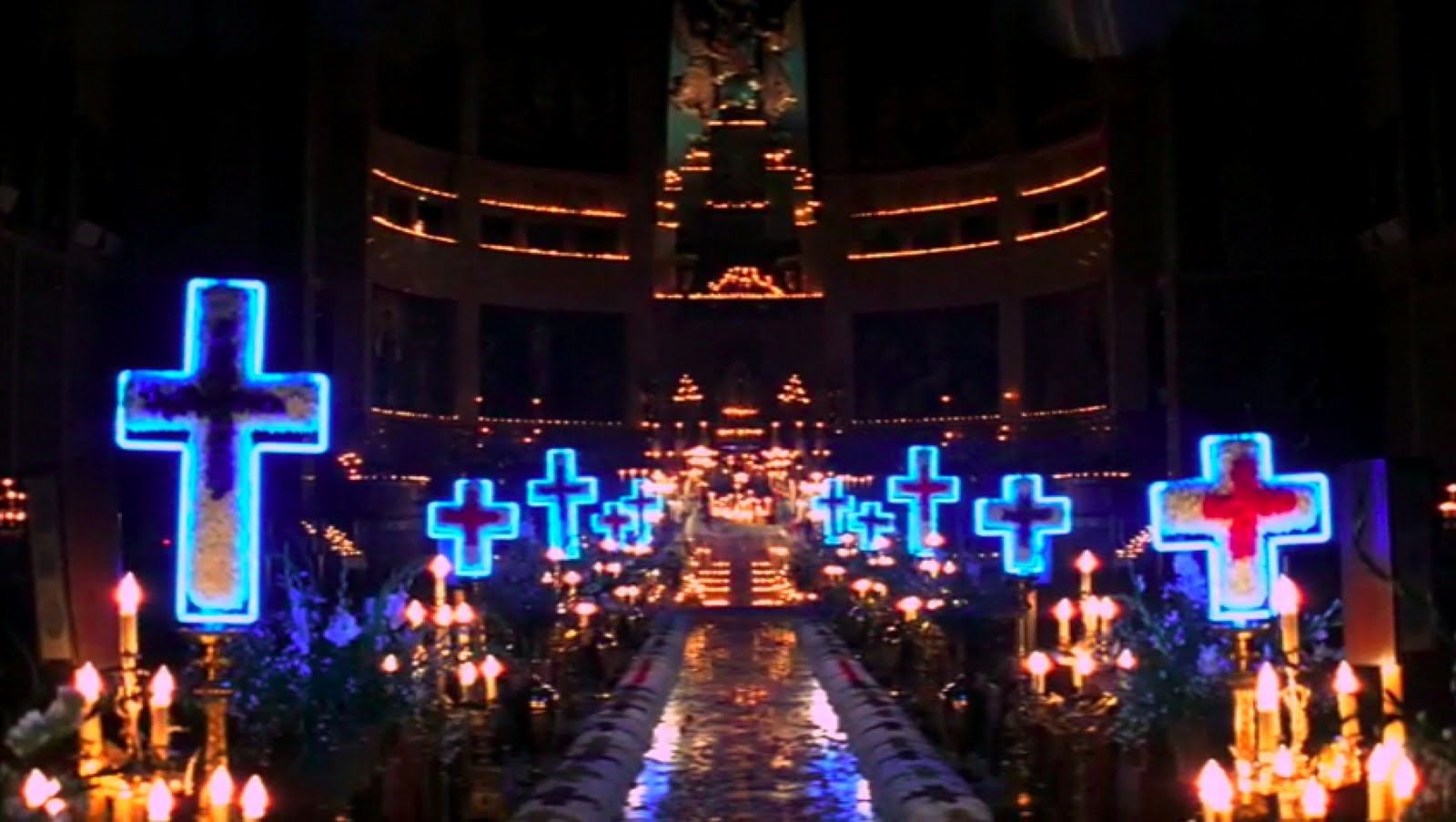
Baz Luhrmann’s first film, Strictly Ballroom also bodes interesting visuals with early experimentation from the notorious director. Towards the film’s beginning, talented but defiant Scott teaches newbie dancer Fran how to become comfortable with herself atop his parent’s dance studio. Featuring a glowing Coca-Cola sign and a bird’s eye view of the Marrickville street corner, I’m still not quite sure how Luhrmann was able to film Scott and Fran from such a high-up angle.
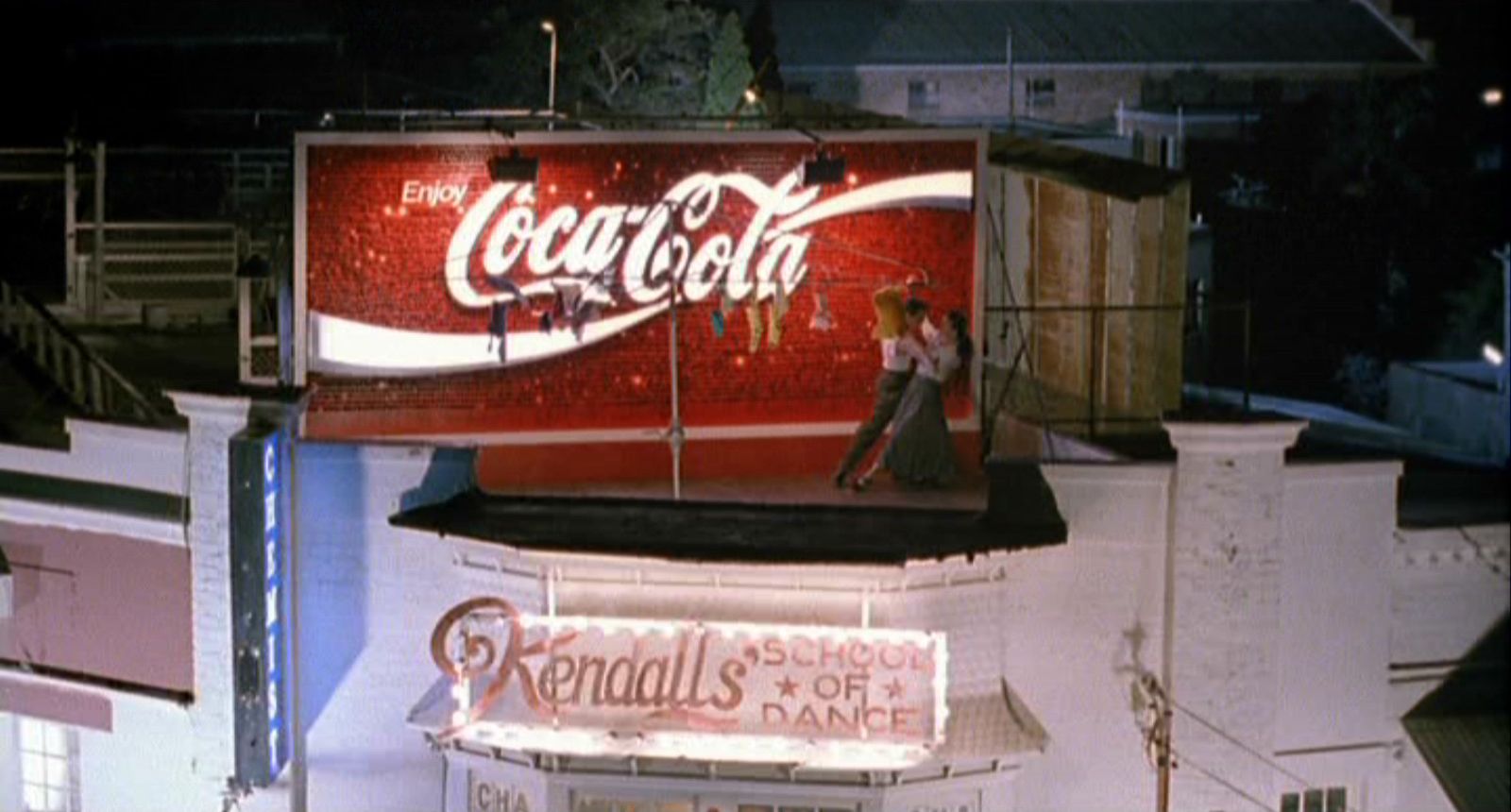
Baz’s painstaking camerawork makes sense, as he was trying to mimic the appearance of his staged version of Strictly Ballroom, developed when Luhrmann was in college. Naturally, the film boasts extremely vibrant costume colors. The dancers wear flashy reds and yellows and flaunt strongly pigmented hair dye. Martin also skillfully recreates competitive dance-wear and styles of the 1960s during a scene that flashes back to Scott’s father’s dancing heyday.
Soundtrack Ft. Baz Luhrmann
Baz Luhrmann is a man of the stage. Only after agreeing to be involved with the filming of Strictly Ballroom on the condition that he could direct it, did Luhrmann enter the realm of moving pictures. As such, music is an integral part of each of Luhrmann’s films, and he is always involved in some aspect of its cultivation. Although Strictly Ballroom was a play, not a musical, its soundtrack highlights some early effort on Luhrmann’s part.
Most notably, a rendition of Cyndi Lauper’s “Time After Time” is heard throughout the film, usually during Fran’s lessons with Scott. Although this is the only immediately-recognizable song in the film, Luhrmann skillfully incorporates it; ensuring the delivery isn’t cheesy. Luhrmann also includes elements of Spanish music and dance when Fran’s family teaches Scott the Paso Doble.
Baz’s First Chart Topper
Rising to number one on the albums chart in Australia and New Zealand, the soundtrack to 1996’s Romeo + Juliet was Baz Luhrmann’s first big musical success. Going four times platinum and selling over 3.3 million copies in the United States, the Romeo + Juliet soundtrack included such hits as “#1 Crush” by Garbage, “Lovefool” by the Cardigans, “Young Hearts Run Free” by Kym Mazelle, and “Kissing You” by Des’ree. Luhrmann did a great job of picking out songs that conveyed the teen-moodiness centric to Romeo + Juliet, absent in most other adaptations.
“Angel” by Gavin Friday and “You and Me Song” by The Wannadies really get at the over-the-top romance of the movie, while also modernizing the centuries-old play. “Talk Show Host” by token 90’s emo-band, Radiohead, also elevates the play’s legacy by driving home the “give me love or give me death” theme. Put simply, the movie is completely ridiculous, but it avoids being scoffed at through its accurate portrayal of young teens falling in love, a high-note Luhrmann adeptly underlines through careful soundtrack choices.
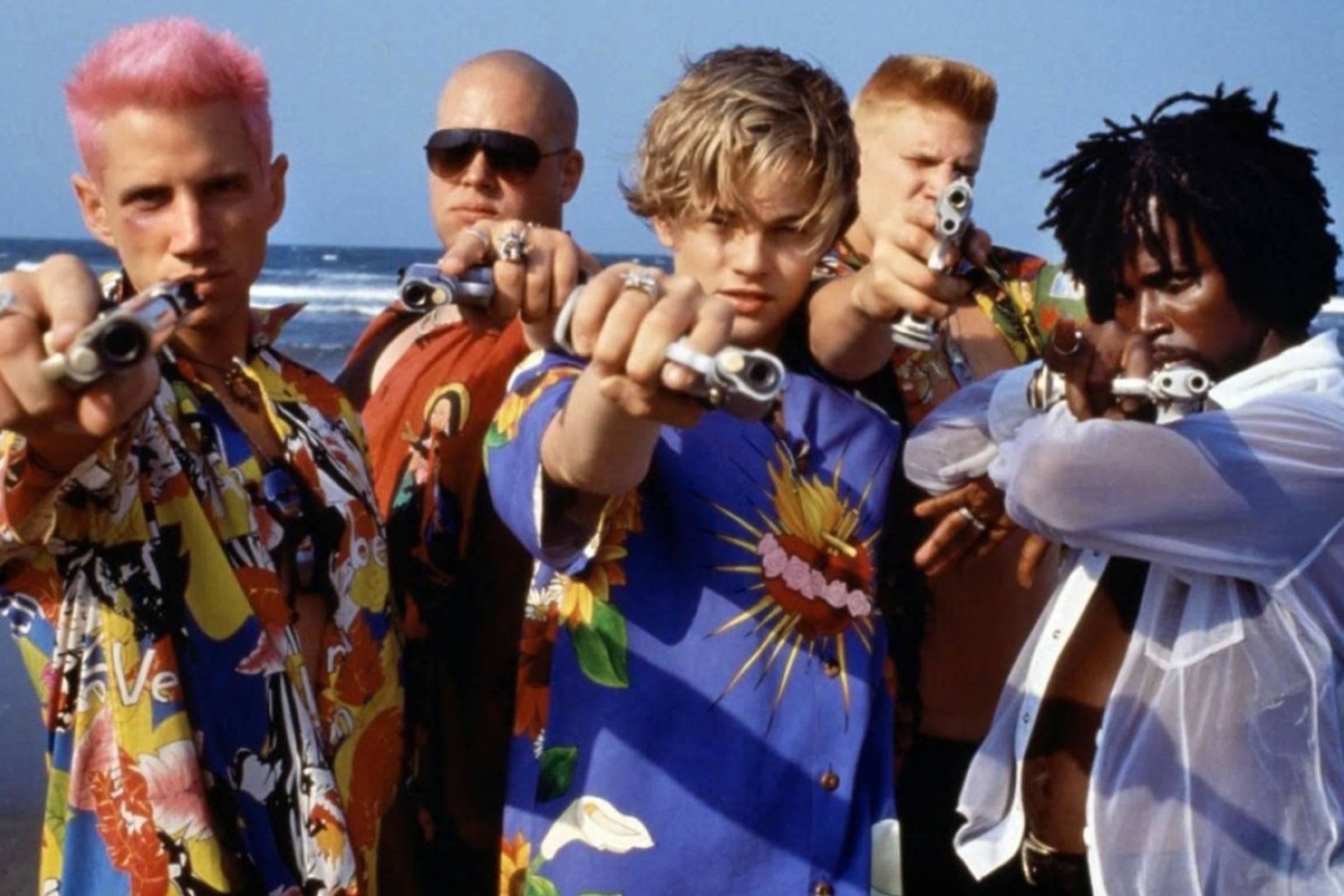
A tenth anniversary edition of the soundtrack was released in 2007, including compositions by Craig Armstrong layered with in-character narration from Leonardo DiCaprio, as well as Baz Luhrmann’s own “Everybody’s Free (To Wear Sunscreen).” An often neglected highlight from the re-release is “Introduction to Romeo” which includes portions of Romeo’s opening lines set against Radiohead’s “Talk Show Host” base-line. The song, assisted by orchestrations from Armstrong, really conveys the impending sense of doom felt throughout the film. As was typical of the time, Radiohead more than delivers on their part. The band’s second song for the movie, “Exit Music (For a Film),” is played over the end-credits, though is not included on the official soundtrack.
A Spectacular, Spectacular Creation
Likely the most painstaking to create, Moulin Rouge’s soundtrack has the distinction of going to number three on the US albums chart and finishing at number one for the year 2001 in Australia. Every song was handpicked and redesigned with Baz Luhrmann’s input. Featuring an extremely wide range of music from David Bowie to Fatboy Slim, the soundtrack and the film were massive hits. Showcasing chart-toppers from various eras, Nat King Cole’s “Nature Boy,” Labelle’s “Lady Marmalade,” Carol Channing’s “Diamonds Are a Girl’s Best Friend,” and Elton John’s “Your Song” were all repurposed (( The Daily Fandom )) for the movie-musical.
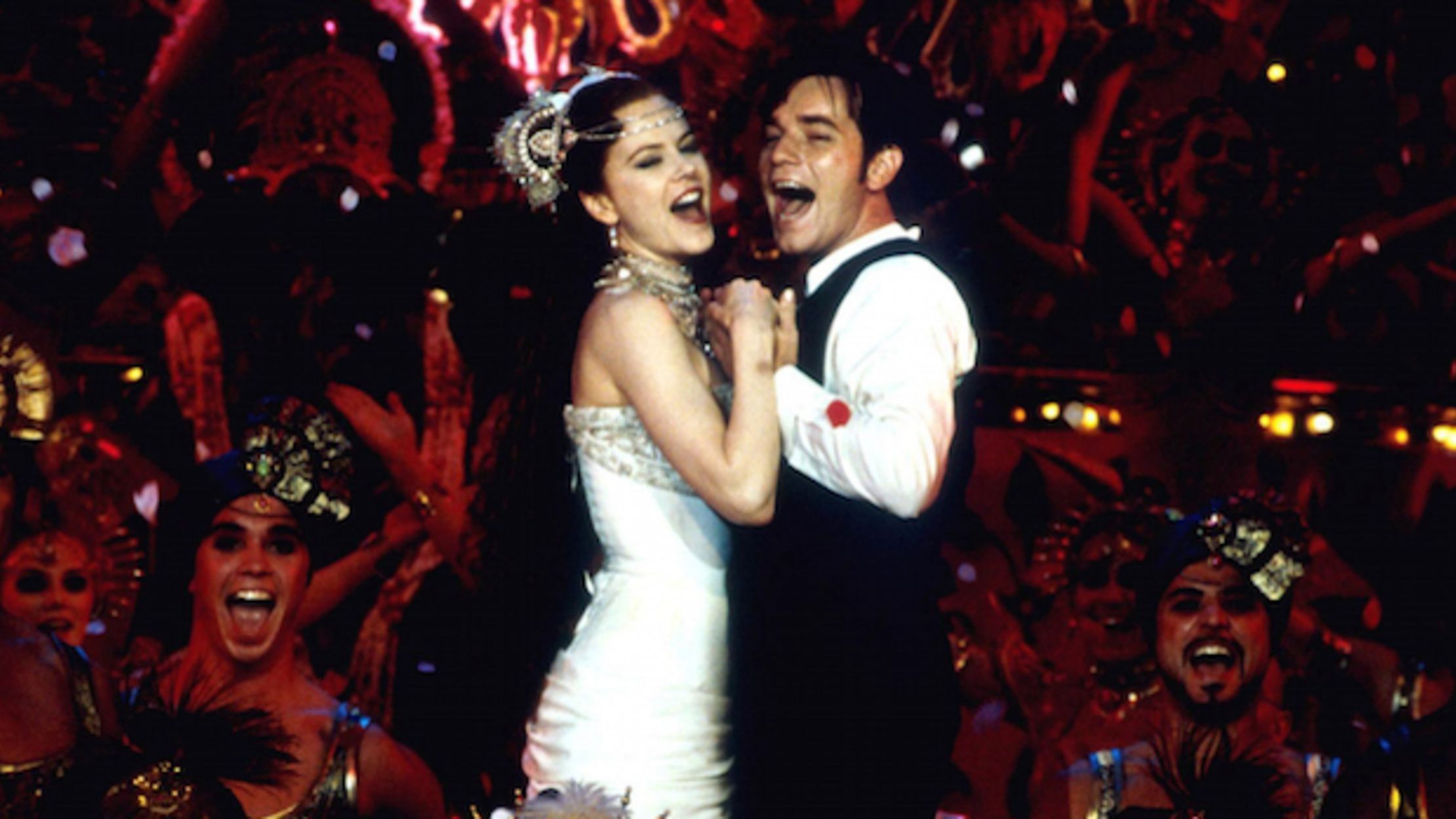
The songs are just plain fun, and the movie’s chaotic and, at times, the disorienting atmosphere is enhanced by such an eclectic soundtrack. Although the album truly has countless high points, the most notable include a rendition of Madonna’s “Like a Virgin,” featured on volume two of the soundtrack; a Jose Feliciano inflected version of The Police’s “Roxanne”; Beck’s cover of David Bowie’s “Diamond Dogs”; and “Elephant Love Medley,” which includes more song mash-ups than I can count sung by Ewan McGregor and Nicole Kidman.
Baz Luhrmann skillfully uses these classic songs to further the narrative while also changing aspects of their tempo and pitch to create something genuinely fresh and unique. In addition, Luhrmann made sure to hit home the movie’s emphasis on romance by including “Come What May” after it was scrapped for use in Romeo + Juliet. Despite the song’s perfect fit as “the lover’s secret song,” its popularity wasn’t enough to make it eligible for an Academy Award as it was not composed for Moulin Rouge!. The decision to exclude “Come What May” from the nominations list was met with significant backlash, with most critics believing the song would have won were it nominated.
If It Ain’t Broke, Don’t Fix It
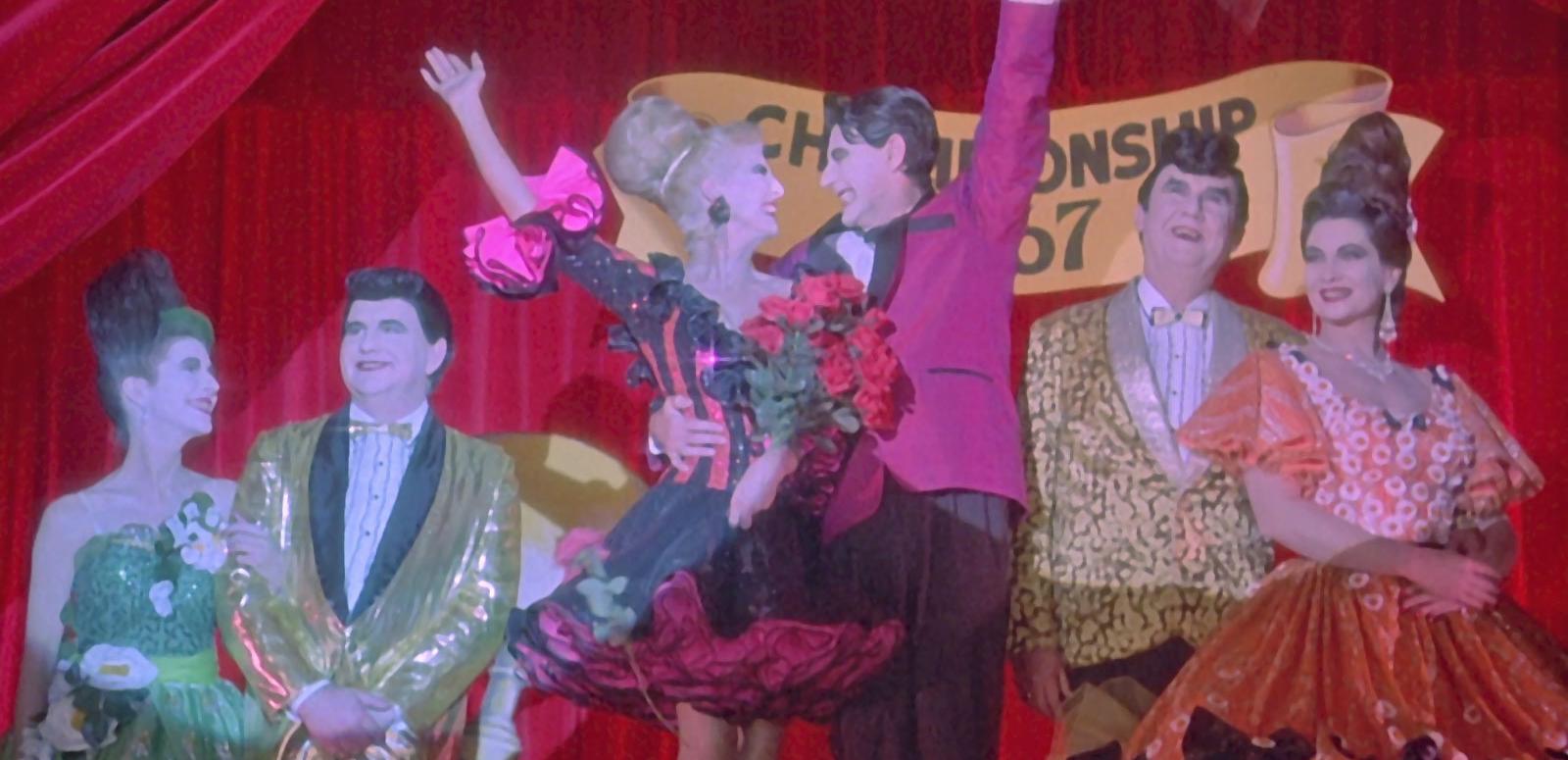
If you watched all three films of the Red Curtain Trilogy back to back, you’d notice a pattern. Baz Luhrmann tends to use the same actors, most notably Leonardo DiCaprio, Nicole Kidman, and John Leguizamo. All three Red Curtain films heavily revolve around romance. The male protagonist in each is someone who feels different or other, a rather tired cliché. Similarly, the female lead is someone who feels trapped or mistreated, unable to express their true self, another beaten-to-death trope.
Even the films build and structure overlap: about halfway through each, the characters reach a high-point, the happiest they are for the duration of the movie. However, the protagonists’ exuberance always comes to an abrupt end. In Strictly Ballroom, Fran finds out Scott will likely dance with Tina Sparkle in the championship. In Romeo + Juliet, Romeo shoots Tybalt after Mercutio dies. And in Moulin Rouge! Zidler tells Satine she will soon die from Tuberculosis.
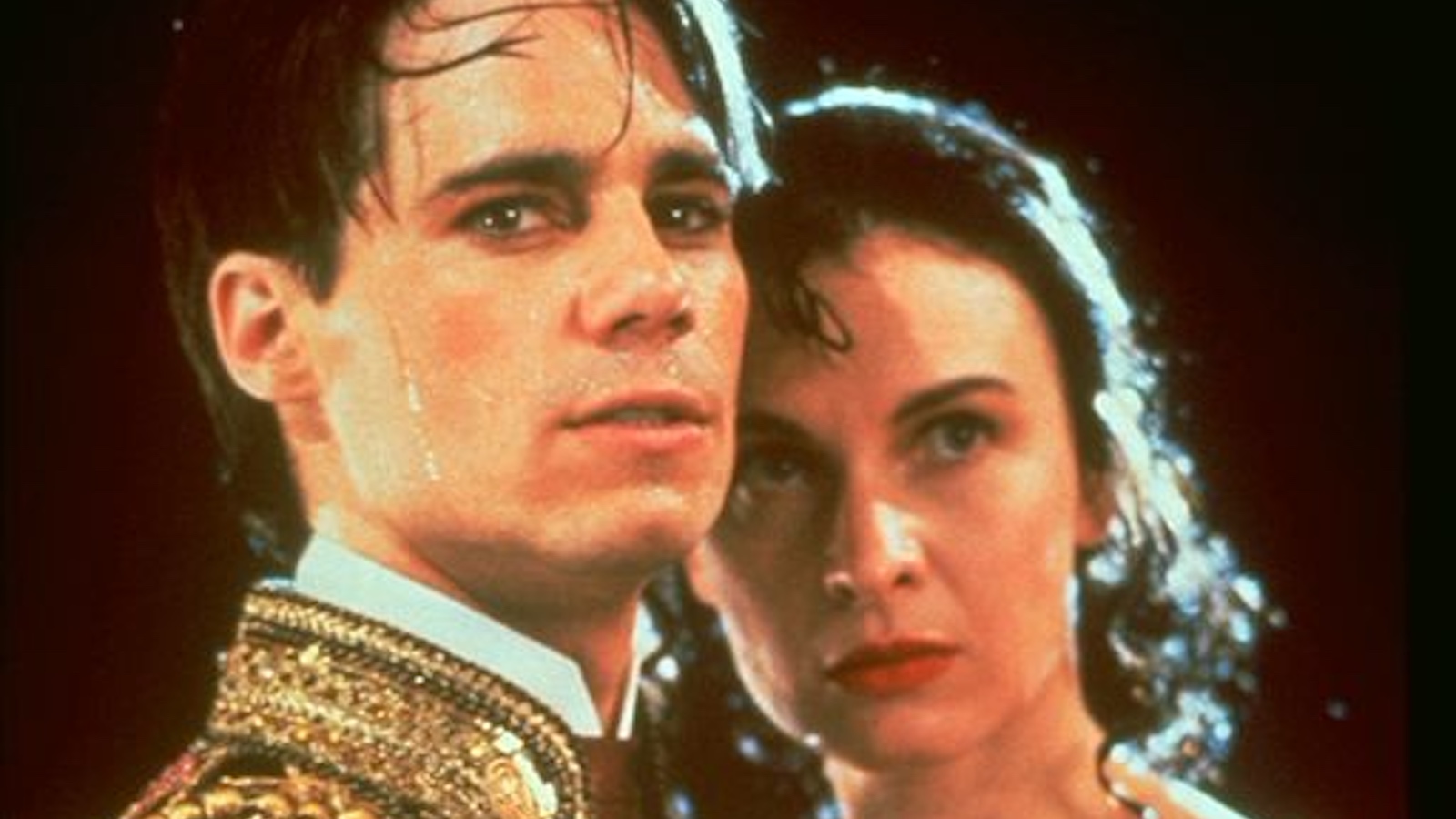
There is, however, some variability. Romeo and Juliet both die rather awful deaths, but Scott and Fran live happily ever after. In Moulin Rouge! Satine does eventually die, but Christian lives to become an alcoholic writer. Though not all three have a happy ending, the plot structures are all more or less the same. But this is not a criticism or even a drawback.
Red Curtain is also a genre of cinema based on rules, one of which states the stories told must be based on familiar narratives. Baz Luhrmann adheres to the rules he sets out for himself, but also avoids making the stories seem repetitive and tired by maintaining a significantly heightened level of creativity. Anyone who is a Baz Luhrmann fan can see the glaring similarities between his films, but such commonalities come to be seen as welcome staples of Baz’s films as opposed to eye-rolling deja vu.
So Delighting, It Will Run For Fifty Years
Ultimately, it seems Baz Luhrmann’s films endure because of their similar formula. The Red Curtain Trilogy goes way over-the-top in its theatrical elements, utilizing and playing into them, but doesn’t take itself too seriously in doing so. Luhrmann termed the films collectively as “The Red Curtain Trilogy” to emphasize the genre’s presence in each movie. That genre is based on three rules: the stories must be creative and innovative, the stories must be based on familiar narratives, and the audience must know what they are seeing is not real.
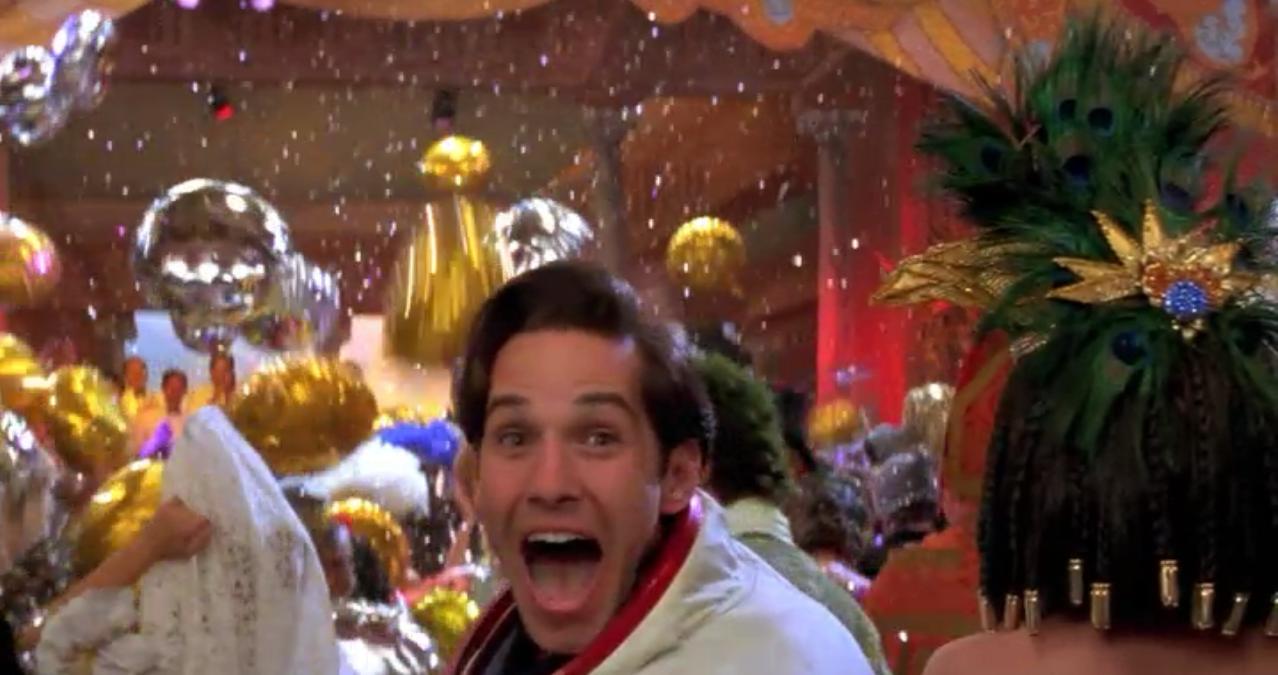
Baz Luhrmann more than manages to pull the first two off, but I’d like to think the trilogy resonates so strongly due to its pure escapism and world-of-pretend atmosphere that also strongly emulates raw human emotion and drama. The audience is aware of what they are watching is not real, but the relatable aspects of the Red Curtain Trilogy are what enable audiences to keep revisiting these films, time and time again.
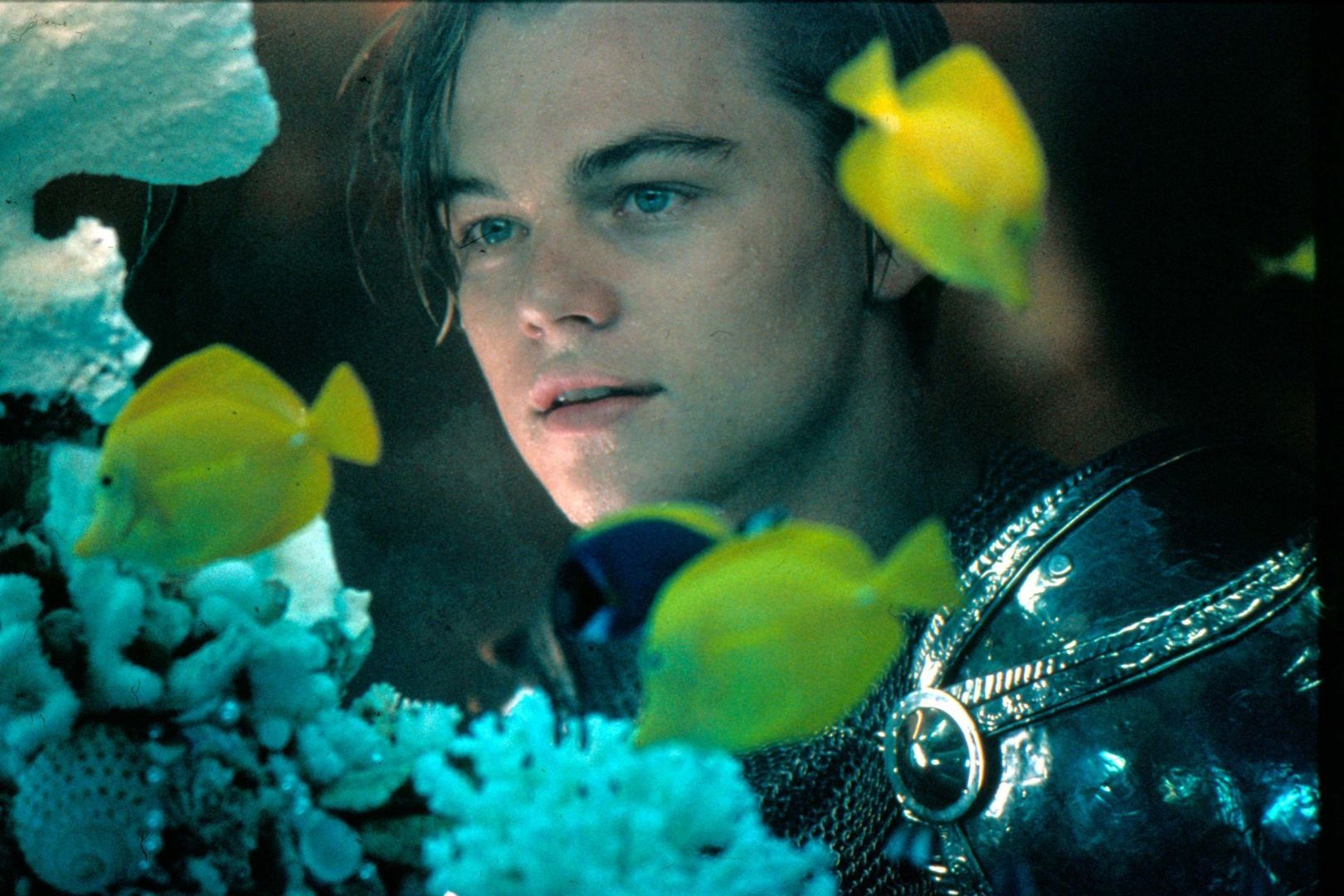
I have to say, this article brought to light why Luhrmann’s work still resonates. The plot constants are comforting and the accoutrements make them stand out.
Luhrmann is certainly unique and his films have a very distinct feel. You know who’s behind the camera. The leering faces and fun-house close ups stick with you….like those creepy paintings by Hieronymus Bosch’s paintings, but set in motion. Great stuff.
Luhrmann’s work is certainly unique. The leering faces and fun-house close ups are reminiscent of a Hieronymus Bosch painting set to motion…and equally haunting.